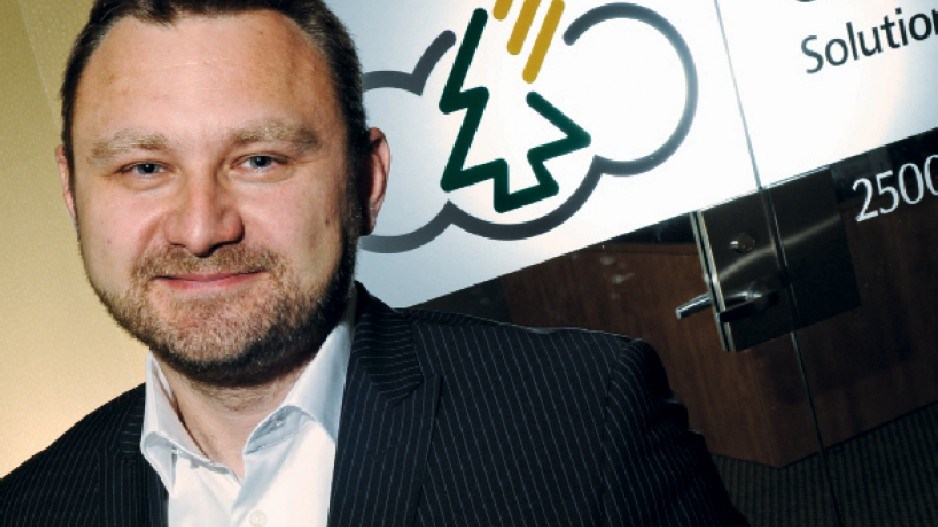It’s not exactly turning coal into diamonds, but a new water-extraction process being developed by a Vancouver company promises to turn low-grade coal into a cleaner, higher grade product using microwaves.
MicroCoal Inc., a subsidiary of Carbon Friendly Solutions (CNX:CFQ), has a pilot project underway in Colorado that steps up low-grade coal and produces clean water in the process.
The company has signed a letter of intent with Ameren Corp. (NYSE:AEE) to use the process at one of its coal-fired power plants in the U.S.
The company has also been shopping its technology around China to power producers and steel makers, Carbon Friendly CEO Slawek Smulewicz said it has signed a memorandum of understanding with a steel company in China. Coal is the world’s single largest source of energy generation. It’s relatively cheap and abundant, but because of the emissions it produces when burned, coal also has a high environmental cost.
In addition to a host of nasty elements, such as mercury, coal contains water. The less it contains, the higher its grade.
The most valuable coal is old and dry. It burns better but is dirtier than lower-grade coal, because it has higher sulphur, mercury and ash content.
Low-grade coal is cleaner, but has a high water content, which lowers its caloric or energy value.Microwaving coal to dry it out steps it up to something that is cleaner than high-grade coal but which has equivalent Btus (British thermal unit, the standard measurement used to state a fuel’s energy content) values.
“The MicroCoal thermal coal processing technology represents a promising development,” said Andrew Bamber, CEO of Mine Sense Technologies Ltd., a B.C. company that specializes in increasing ore recovery.
“Of course, removing moisture from coal by mechanical means is the most energy efficient of all; however, to achieve certain low-moisture contents, thermal methods are necessary, and microwave looks by far the most energy efficient of the thermal methods available.”
MicroCoal isn’t the only company using microwaves to dehydrate coal. American companies like CoalTek also use microwave process to make “clean coal.”
However, Smulewicz said MicroCoal’s competitors nuke the coal as it moves along conveyor belts, which doesn’t allow for the water or contaminants to be captured or contained.
MicroCoal’s process is closed and uses a vacuum system that allows the water extracted from the coal to be captured – about 100 kilograms per tonne of coal.
The coal dust created in the process acts like a filter that captures sulphur and mercury.
One of the problems with microwave technology is the amount of electricity it uses. About six megawatts (mW) of electricity would be needed to dewater the coal burned in a 100-mW power plant.
MicroCoal’s reactors are designed to operate at off-peak hours, when power plants are sometimes nearly giving away the power they generate.
The MicroCoal process is still being tested at pilot facility at Hazen Research Inc.’s lab in Golden, Colorado.
Thus far, 25 tonnes of coal have been processed.
The project’s second phase involves the construction and operation of a microwave reactor for Ameren at a 1,000 mW coal-fired power plant in Missouri.
Under an agreement with Ameren, the MicroCoal plant will treat 250,000 tonnes of coal per month.
A MicroCoal reactor for a small 200-mW power plant would cost between $35 million and $40 million to build. It would allow power plants to buy low-grade coal at $14 per tonne, as opposed to high-grade coal at $50 to $60 per tonne.
“The payback for the power plant is approximately between two and three years,” Smulewicz said.
But from an investor’s perspective, any company making technology associated with coal – even one that cleans it up – may have a tough row to hoe, at least in North America, said Kirk Washington, a partner at Yaletown Venture Partners, a venture capital firm specializing in clean technology companies.
Because of the greenhouse gases coal produces, there is tremendous pressure to phase it out, and in North America, cleaner burning natural gas has become so cheap that even technology that produces “clean coal” could be a hard sell.
“Interesting technology – [but this] might be a difficult time to bring it along,” Washington said. “The low cost of natural gas is putting pressure on all other commodity sources of energy.”
Washington said that the market in China, where coal continues to be a primary source of power, might provide better market prospects, but he added that even China is feeling the pressure to switch from coal to other, cleaner sources of energy. •




